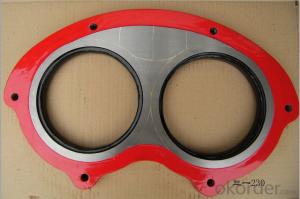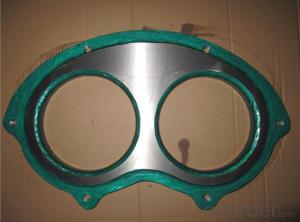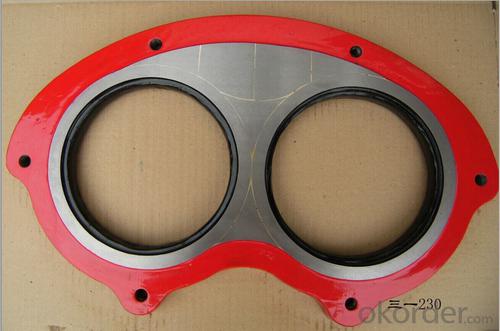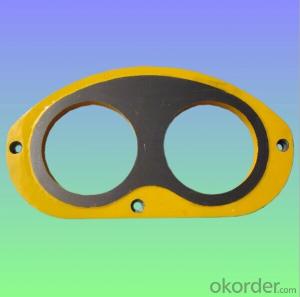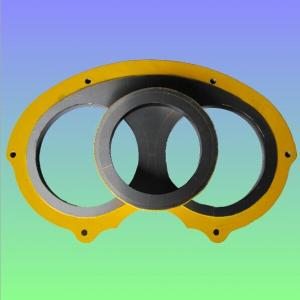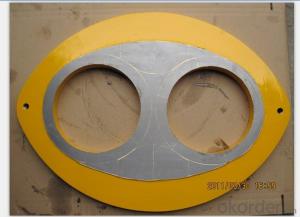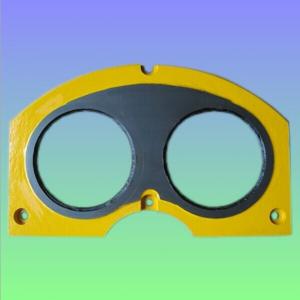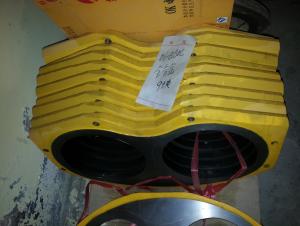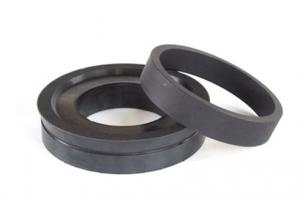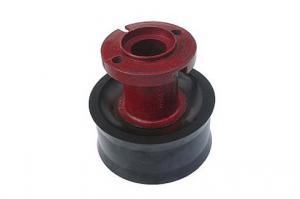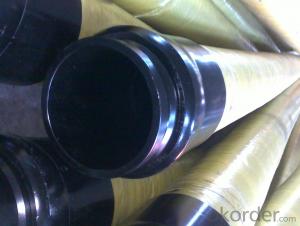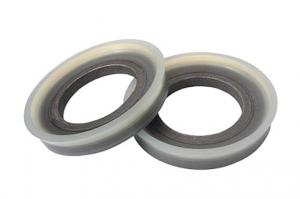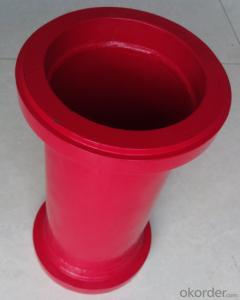SANY Spectacle Plate and Wear Ring DN230
- Loading Port:
- Tianjin
- Payment Terms:
- TT or LC
- Min Order Qty:
- 3 pc
- Supply Capability:
- 1000 pc/month
OKorder Service Pledge
OKorder Financial Service
You Might Also Like
Product Name: SANY Wear Ring and Plate DN230
1. Specification
1. Material: Plate body S35C steel, tungsten carbide E5 grade.
2. Lifetime: 30,000~80,000cbm
3. HRA≥86
4. Germany Welding rod used for hardfacing
5. tensile strength ≥ 2500 N/mm2
6. Application: trailer and trunk mounted Sany concrete pump
Notes: total series of Concrete Pump Spectacle Wear Plate and Cutting Ring for different brand concrete pump (PUTZMEISTER, SCHWING, CIFA, SANY, ZOOMLION, IHI, KYOKUTO,Niigata Etc) available from us.
2. Application
Our SANY Spectacle Wear Ring and Plate DN230 have been successfully exported to many countries from 1998, Our main markets as below: Middle East, Southeast Asia, America, Brazil, Italy, Russia, South Africa etc
3. Package
Every 60pcs Spectacle Wear Ring and Plate DN230 put in one seaworthy wooden box, and 20 boxes in one 20feet container.
FAQ:
Q1: Why buy Materials & Equipment from us?
A1: All products have its ISO certifications, adheres to the highest standards and a commitment to supply chain safety and customer satisfaction.
Q2: How do we guarantee the quality of our products?
A2: We have established an advanced quality management system which conducts strict quality tests at every step, from raw materials to the final product. At the same time, we provide extensive follow-up service assurances as required.
Q3: How soon can we receive the product after purchase?
A3: Within three days of placing an order, we will begin production. The specific shipping date is dependent upon international and government factors, but is typically 10 to 30 workdays.
Q4: If we can produce some Spectacle Wear Ring and Plate DN230 according to customers request?
A4: Yes, we can produce Spectacle Wear Ring and Plate DN230 according to the difference country situations and different concrete pump to make it suitable to the market and customers. We have very professional technical team to make the design.
Q5: How to make a quick resolution for after service?
A5:We have overseas branches all-around of world, IF needed, the seller shall dispatch 2 engineers to the buyer's site for supervision of training. The buyer shall make available of necessary facilities &skilled personnel at site for training.
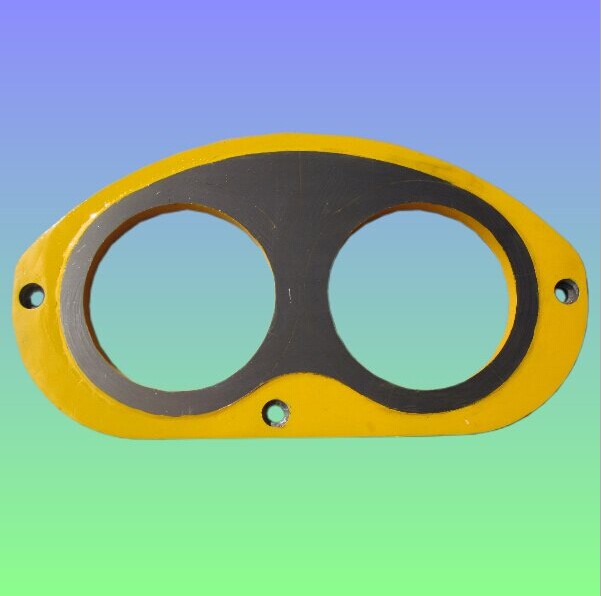
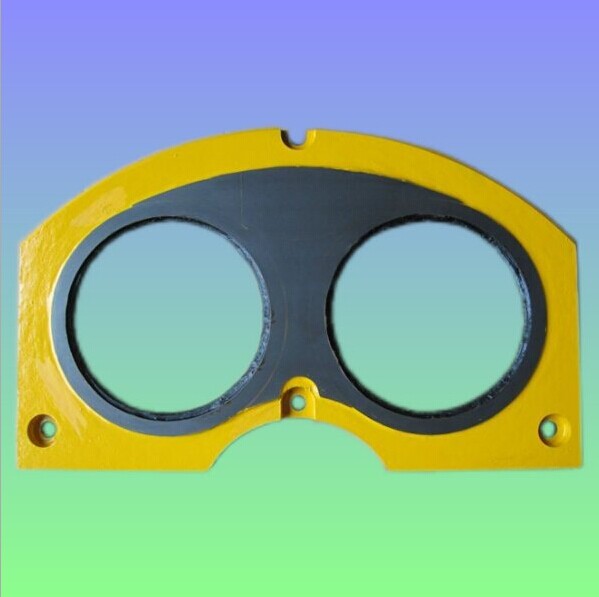
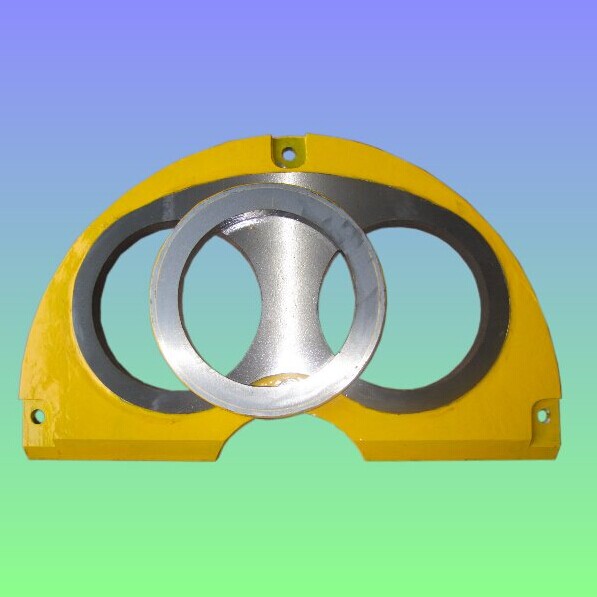
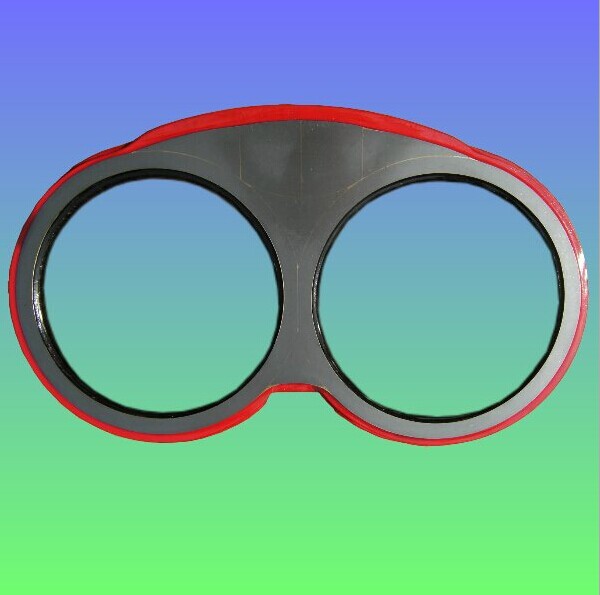
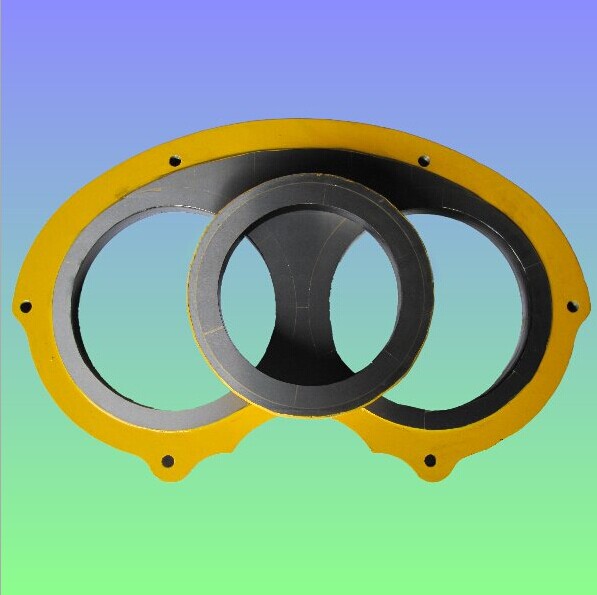
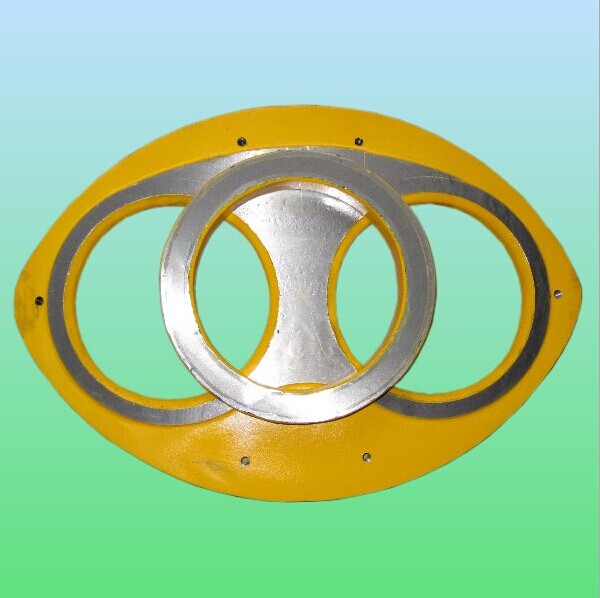
- Q: What are the potential risks of using non-standard or modified hydraulic components in concrete pump spare parts?
- There are several potential risks associated with using non-standard or modified hydraulic components in concrete pump spare parts. Firstly, these components may not have undergone the same rigorous testing and quality control as the original equipment manufacturer (OEM) parts. As a result, their performance and durability may be compromised, which can lead to potential failures or malfunctions. This, in turn, can cause accidents, injuries, or damage to the equipment or surrounding structures. Secondly, the use of non-standard or modified components may void the warranty of the concrete pump and its spare parts. Typically, manufacturers offer warranties to ensure the reliability and safety of their products. However, by using non-standard components, the warranty may become null and void. Consequently, the user will be responsible for any repairs or replacements needed due to issues arising from these non-standard parts. Another risk is the potential compatibility issues that may arise when using non-standard or modified components. Hydraulic systems rely on precise engineering and compatibility between various components to function optimally. Non-standard or modified parts may not fit properly or may have different specifications, resulting in leaks, pressure imbalances, or reduced overall performance. Furthermore, the use of non-standard or modified components can impact the overall efficiency and productivity of the concrete pump. OEM parts are specifically designed to work seamlessly with the rest of the system, ensuring smooth operation and maximum output. However, by using non-standard parts, the performance of the pump may be compromised, leading to increased downtime, decreased productivity, and higher maintenance costs. Lastly, the use of non-standard or modified components can also have legal and regulatory implications. Certain jurisdictions may have regulations or standards in place that require the use of OEM or certified parts for specific equipment, including concrete pumps. Failure to comply with these regulations can result in fines, penalties, or legal liabilities in the event of accidents or failures. In conclusion, the potential risks associated with using non-standard or modified hydraulic components in concrete pump spare parts include compromised performance and durability, warranty voidance, compatibility issues, reduced efficiency, and legal and regulatory implications. It is always advisable to use OEM or certified spare parts to ensure the safety, reliability, and optimal performance of the equipment.
- Q: What is the purpose of a concrete pump agitator motor?
- The purpose of a concrete pump agitator motor is to ensure the consistency and quality of the concrete mixture being pumped. It is responsible for keeping the concrete mixture well-mixed and preventing it from settling or separating during the pumping process. The agitator motor helps to maintain a uniform and homogenous mixture, which is crucial for achieving strong and durable concrete structures. By continuously agitating the concrete inside the pump, the motor helps to prevent any blockages or clogs that could potentially disrupt the pumping operation. Overall, the purpose of a concrete pump agitator motor is to enhance the efficiency and effectiveness of the concrete pumping process, ultimately resulting in better construction outcomes.
- Q: What is the role of a concrete pump agitator shaft seal?
- The role of a concrete pump agitator shaft seal is to prevent leakage of concrete slurry or other fluids from the agitator shaft, ensuring that the pump operates efficiently and without any loss or contamination of the material being pumped.
- Q: Can I get spare parts for both concrete pumps with and without lubrication systems?
- Yes, spare parts are available for both concrete pumps with and without lubrication systems.
- Q: How do I properly maintain and replace hydraulic motors in concrete pump spare parts?
- Proper maintenance and replacement of hydraulic motors in concrete pump spare parts involves several key steps. Firstly, it is crucial to regularly inspect and clean the motors to remove any dirt, debris, or build-up that may affect their performance. Additionally, checking and topping up the hydraulic fluid levels is essential to ensure optimal operation. Regularly monitoring the motors for any signs of leaks, unusual noises, or decreased efficiency is also important. If any issues are detected, prompt repairs or replacements should be undertaken by experienced professionals to prevent further damage. It is recommended to follow the manufacturer's guidelines and specifications for maintenance and replacement procedures to ensure the longevity and reliability of the hydraulic motors.
- Q: How often should hopper grate levers be inspected or replaced in a concrete pump?
- Hopper grate levers in a concrete pump should be inspected regularly, ideally after every use or at least once a week, to ensure they are in proper working condition. Depending on the wear and tear, they may need to be replaced periodically to maintain the efficiency and safety of the pump.
- Q: Do concrete pump spare parts come with a warranty?
- Certainly, a warranty is provided for concrete pump spare parts. The duration of the warranty may differ depending on the manufacturer and the specific part being acquired. Typically, well-established manufacturers and suppliers offer warranties on their spare parts to instill confidence in customers regarding the product's quality and dependability. It is crucial to thoroughly examine the warranty's terms and conditions to comprehend the coverage and duration. Should any flaws or complications arise within the warranty period, customers can usually obtain a replacement or have the part repaired without incurring any additional expenses.
- Q: What are the advantages of using tungsten carbide components in concrete pump spare parts?
- There are several advantages of using tungsten carbide components in concrete pump spare parts. Firstly, tungsten carbide is an extremely hard and durable material, which ensures longer lifespan and increased wear resistance of the components. This means reduced maintenance and replacement costs in the long run. Additionally, tungsten carbide has excellent corrosion resistance, making it suitable for use in harsh and corrosive environments commonly found in concrete pumping applications. Furthermore, tungsten carbide components offer superior strength and toughness, enabling them to withstand high-pressure and heavy-duty operations without compromising performance. Overall, the use of tungsten carbide in concrete pump spare parts leads to improved efficiency, reliability, and cost-effectiveness in concrete pumping operations.
- Q: What is the function of a concrete pump hydraulic motor?
- The concrete pump hydraulic motor serves the purpose of supplying the essential power and force needed for the operation of the concrete pump. Its responsibility lies in transforming hydraulic energy into mechanical energy, thereby enabling the pump to function with efficiency and effectiveness. By propelling the pumping mechanism, it allows the concrete to be transported through the pipeline and delivered to the desired destination. Additionally, the hydraulic motor governs the pump's speed and direction, facilitating accurate placement of the concrete. In conclusion, the concrete pump hydraulic motor plays a vital role in guaranteeing the seamless operation and triumphant delivery of concrete in construction endeavors.
- Q: What are the signs of a worn-out concrete pump piston?
- There are several signs that can indicate a worn-out concrete pump piston. Firstly, if the concrete pump is experiencing a decrease in output or performance, it could be a sign that the piston is worn-out. This decrease in performance can be seen through reduced pumping pressure or slower pumping speed. Another sign of a worn-out concrete pump piston is increased leakage. If you notice excessive hydraulic oil or water leaking from the pump, it could be an indication that the piston is no longer sealing properly. This leakage can also lead to hydraulic fluid contamination, which can further damage the pump components. Furthermore, a worn-out piston can cause irregular concrete flow. If you observe inconsistent and uneven concrete delivery, such as pulsating or surging flow, it may be due to an uneven wear pattern on the piston. This can lead to poor concrete quality and affect the overall efficiency of the pumping operation. In addition, excessive vibration and noise during the pumping process can also be signs of a worn-out piston. Vibrations can occur due to the piston not moving smoothly within the cylinder, causing friction and resulting in noise. These vibrations and noises can also indicate other underlying issues with the pump, so it is essential to address them promptly. Lastly, visual inspection can provide valuable insights into the condition of the concrete pump piston. Signs of physical damage, such as cracks or excessive wear on the piston surface, are clear indications of a worn-out piston. These damages can be caused by abrasive materials or harsh operating conditions. Overall, if you notice any of these signs or suspect that your concrete pump piston is worn-out, it is crucial to have it inspected and replaced by a professional. Timely maintenance and replacement of worn-out pistons can prevent further damage to the pump and ensure smooth and efficient operation.
Send your message to us
SANY Spectacle Plate and Wear Ring DN230
- Loading Port:
- Tianjin
- Payment Terms:
- TT or LC
- Min Order Qty:
- 3 pc
- Supply Capability:
- 1000 pc/month
OKorder Service Pledge
OKorder Financial Service
Similar products
Hot products
Hot Searches
Related keywords
